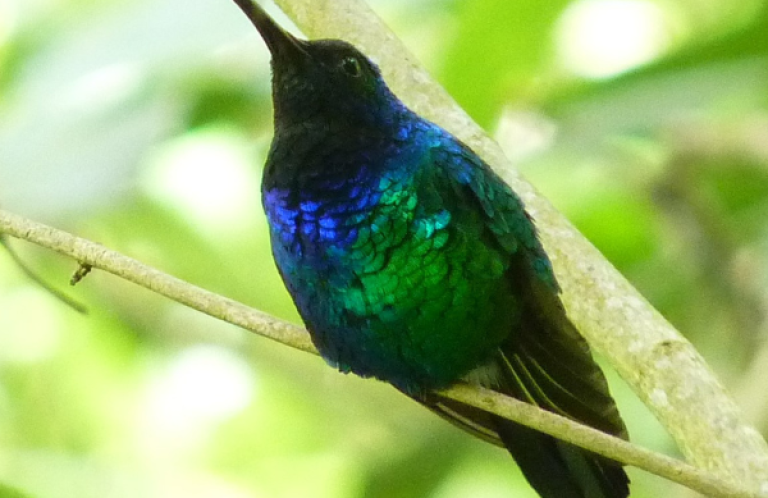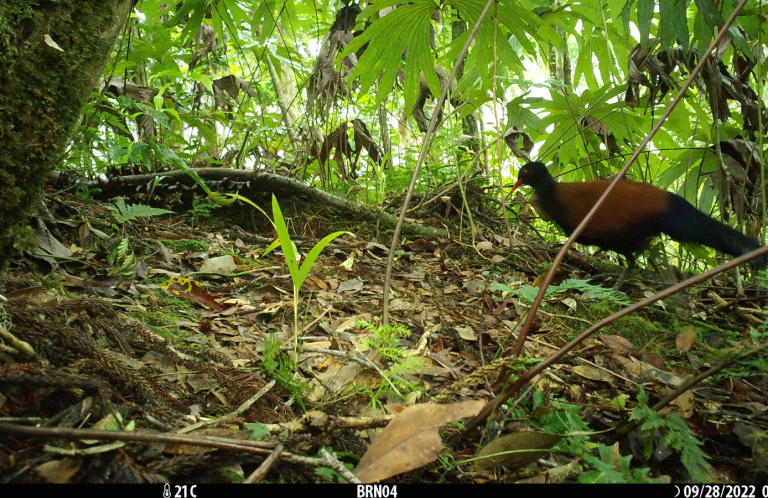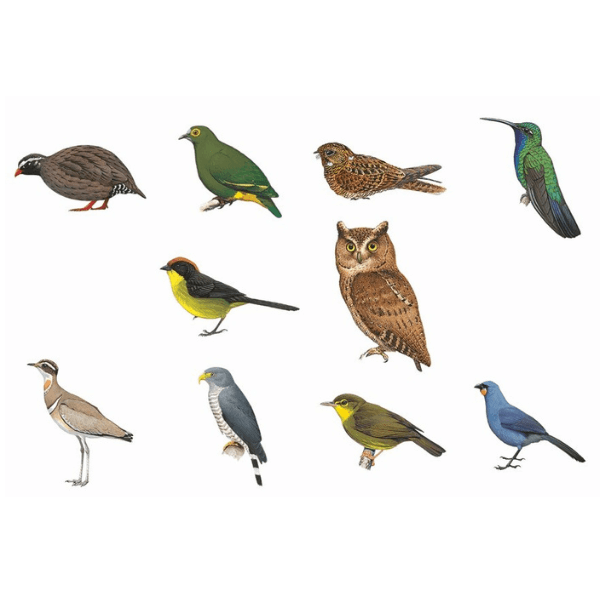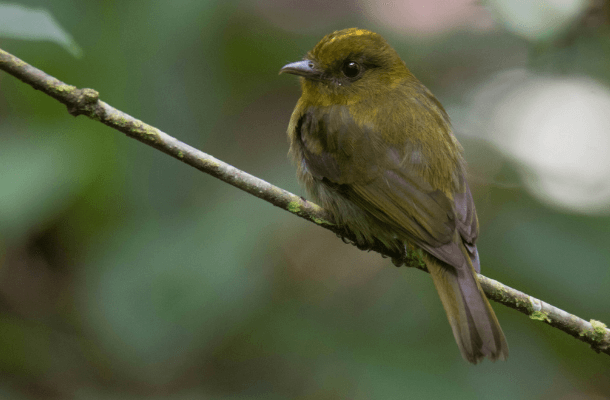Mysterious Songbird Rediscovered in Madagascar After Eluding Scientists for 24 Years
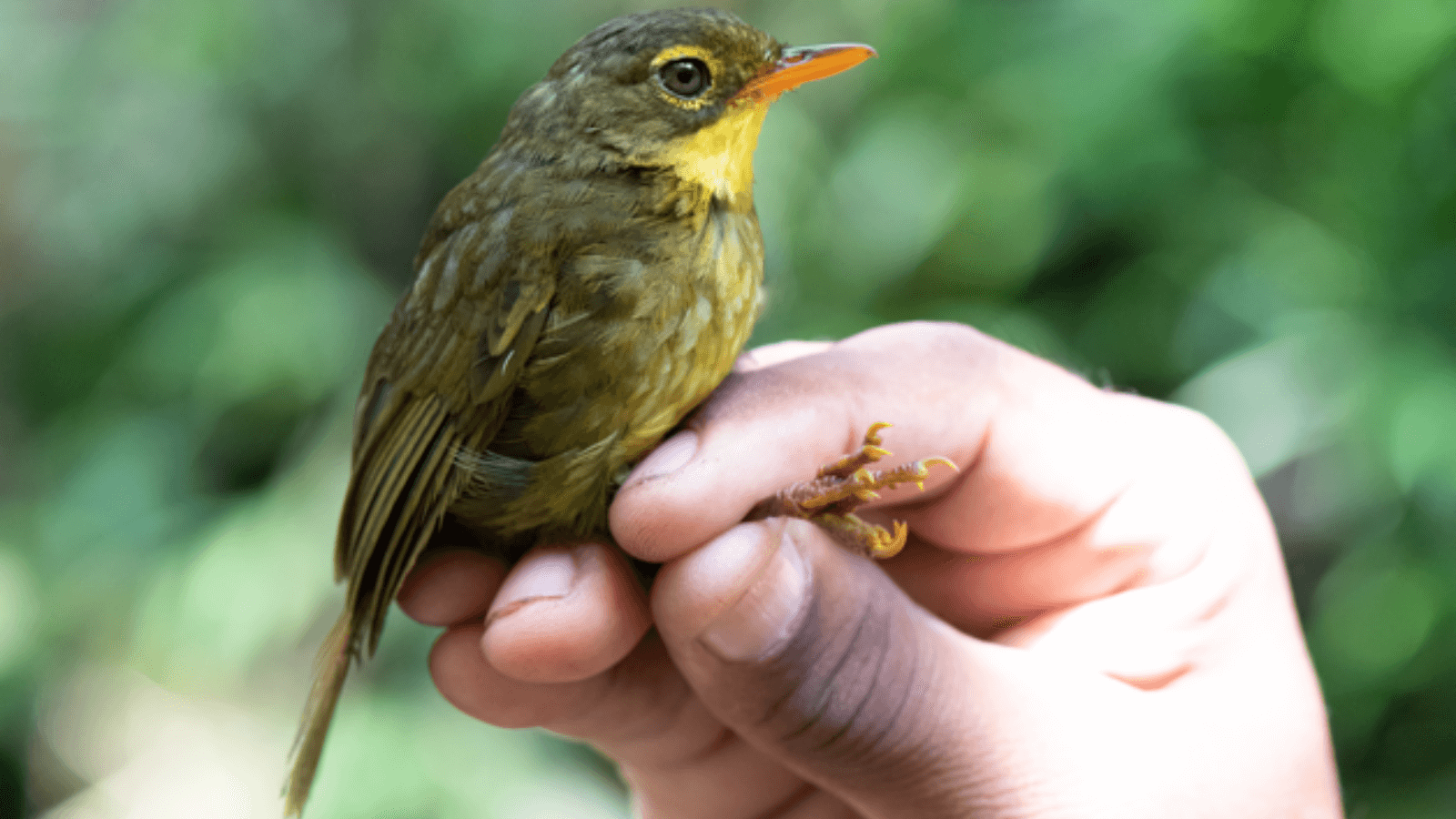
The Dusky Tetraka, a small olive-colored and yellow-throated bird that hops around on the ground and has eluded ornithologists for 24 years, was rediscovered by an expedition team searching the tropical forests of northeastern Madagascar. The expedition team, led by The Peregrine Fund's Madagascar Program, found the species in two different remote sites: one on the Masoala Peninsula in late December 2022 and another near Andapa in January this year. The last documented sighting of the Dusky Tetraka was in 1999, making it one of the top 10 most wanted lost birds by the Search for Lost Birds, a collaboration between American Bird Conservancy (ABC), BirdLife International, and Re:wild.
“Now that we've found the Dusky Tetraka and better understand the habitat it lives in, we can look for it in other parts of Madagascar, and learn important information about its ecology and biology,” said Lily-Arison Rene de Roland, Madagascar Program Director for The Peregrine Fund, and expedition leader. “There is a lot of biodiversity still to discover in Madagascar.”
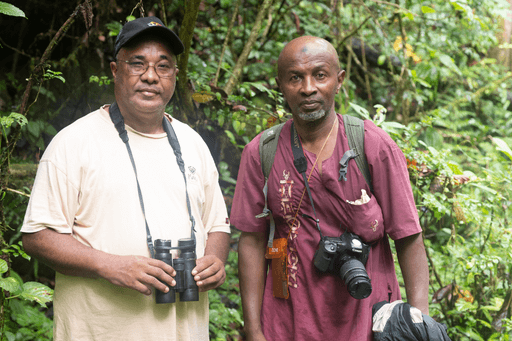
Rene de Roland — who also rediscovered the Madagascar Pochard in 2006 in a remote area of northwestern Madagascar and was a student working with The Peregrine Fund when the Madagascar Serpent Eagle and Red Owl were rediscovered — spent several months searching for the Dusky Tetraka in Madagascar, the only place where it is found. He and his team set out in late December 2022 to search for the tetraka, a warbler-like bird that is part of a family found only in Madagascar, near Andapa. The team had to drive for more than 40 hours and hike for half a day up steep mountains to the last spot the bird had been seen. No ornithologists had returned to the site since 1999.
When the team arrived at the spot, they found that much of the forest had been destroyed and converted to vanilla farms even though the area is officially protected as part of the COMATSA Sud protected area. After five days of searching they decided to move to lower elevations, since they had not seen any sign of the bird and realized that the Dusky Tetraka might not live at higher elevations.
While Rene de Roland and his team were searching for the tetraka near Andapa, another team from The Peregrine Fund's Madagascar Program, led by Armand Benjara and Yverlin Pruvot, found the bird on the Masoala Peninsula where they caught and released a single Dusky Tetraka in a mist net on December 22. Benjara had been hoping to find the tetraka since he started working as a biologist for The Peregrine Fund.
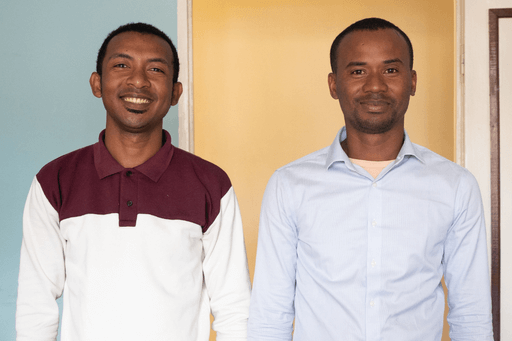
“Seeing the bird for the first time was truly a surprise,” said Benjara. “Our entire team was extremely happy and excited.”
On January 1, eight days into the expedition, Rene de Roland's team got their first glimpse of a Dusky Tetraka. While next to a rocky river, John C. Mittermeier, Director of the Search for Lost Birds Program at ABC, finally saw a bird that matched the description of the Dusky Tetraka hopping around in dense undergrowth near the river and snapped a photo of it. After consulting with the rest of the team, they agreed it was the Dusky Tetraka and quickly moved the search to that area.
“If Dusky Tetrakas always prefer areas close to rivers, this might help to explain why the species has been overlooked for so long,” said Mittermeier. “Birding in tropical forests is all about listening for bird calls and so you naturally tend to avoid spending time next to rushing rivers where you can't hear anything.”
On the last day of the expedition, January 2, the team was able to capture one Dusky Tetraka using a mist net and observe and measure it more closely before releasing it unharmed. The two Dusky Tetrakas they found spent the majority of their time in dense vegetation close to the river, presumably looking for insects and other prey in the damp undergrowth.
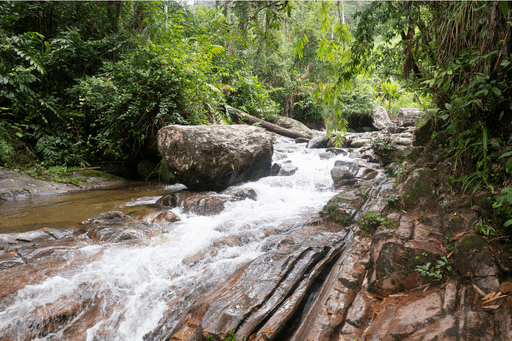
The Dusky Tetraka has a history of mistaken identity largely because it closely resembles another, much more common species, the Spectacled Tetraka. With so few confirmed observations for the Dusky Tetraka, it has been difficult for ornithologists to compile the species' identifying characteristics. Ahead of the trip, the expedition team reviewed all the historical records of the bird dating back nearly a century to be sure they could positively identify the Dusky Tetraka if they found it.
Rene de Roland says the next steps for The Peregrine Fund's Madagascar team will be to look for the Dusky Tetraka again between September and October, when most birds in Madagascar breed. They hope to visit additional sites that match the habitat and elevation where they saw the species in December and January to understand its distribution and conservation status. With the vast majority of the lowland rainforest in northeastern Madagascar already destroyed, it is likely that the Dusky Tetraka is under threat.
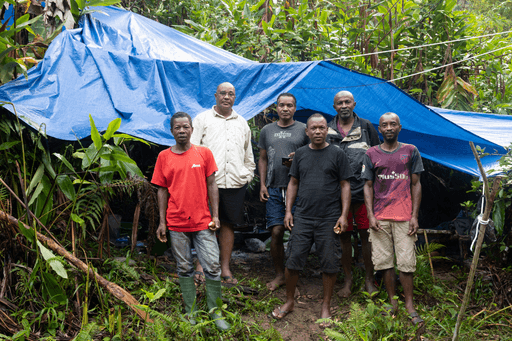
The Search for Lost Birds looks for species that have not had a documented sighting in at least 10 years. It developed a list of the top 10 most wanted lost birds when it launched in 2021. The Santa Marta Sabrewing, another of the top 10 lost birds, was rediscovered in Colombia in July 2022 by Yurgen Vega, a biologist working with SELVA, ProCat Colombia, and World Parrot Trust in the Sierra Nevada de Santa Marta. The eight birds that have yet to be rediscovered are the Siau Scops-Owl in Indonesia, South Island Kōkakō in New Zealand, Himalayan Quail in India, Itombwe Nightjar in Democratic Republic of Congo, Cuban Kite in Cuba, Negros Fruit Dove in the Philippines, Vilcabamba Brushfinch in Peru, and Jerdon's Courser in India.
Additional Quotes:
Christina Biggs, Lost Species Officer, Re:wild
Due to the changed landscape and its cryptic nature, the searchers had to employ some resourceful detective work and impressive persistence to make the eventual rediscovery. We're thrilled and relieved to know that this little bird is still singing in the forests of Madagascar. Now comes the work to protect the spaces that the Dusky Tetraka inhabits, and also keep remaining wild spaces wild, so other birds don't land on our list in the future.
Roger Safford, senior program manager for preventing extinctions, BirdLife International
Several species from the extraordinary island of Madagascar were until fairly recently “lost,” but have been found and are now regularly seen. The Dusky Tetraka was the awkward exception, and it is a credit to The Peregrine Fund team that they have come up with such a thorough set of records of this mystery bird. It does seem to be genuinely rare — but now we can begin to understand why, and take the actions to make sure the forests that meet its seemingly rather precise needs are conserved.
Russell Thorstrom, conservation director, The Peregrine Fund
Finding the Dusky Tetraka is fantastic news! I'm so excited for Lily and The Peregrine Fund's Madagascar Program team for documenting this elusive species and American Bird Conservancy for providing the funding, but extremely envious. I spent seven breeding seasons between 1993 and 1999, from September to January, at Andranobe Field Station on the western side of Masoala Peninsula in northeastern Madagascar. I searched frequently for the Dusky Tetraka while looking for nesting Madagascar Serpent Eagles, from sea level to 500 meters elevation, but never observed a Dusky Tetraka.
###
American Bird Conservancy (ABC) takes bold action to conserve wild birds and their habitats throughout the Americas. Inspired by the wonder of birds, we achieve lasting results for the bird species most in need while also benefiting human communities, biodiversity, and the planet's fragile climate. Our every action is underpinned by science, strengthened by partnerships, and rooted in the belief that diverse perspectives yield stronger results. Founded as a nonprofit organization in 1994, ABC remains committed to safeguarding birds for generations to come. Join us! Together, we can do more to ensure birds thrive.
BirdLife International is the world's largest nature conservation Partnership: a global family of over 115 national NGOs covering all continents, landscapes and seascapes. BirdLife is driven by its belief that local people, working for nature in their own places but connected nationally and internationally through the global Partnership, are the key to sustaining all life on this planet. This unique local-to-global approach delivers high impact and long-term conservation for the benefit of nature and people.
Re:wild protects and restores the wild. We have a singular and powerful focus: the wild as the most effective solution to the interconnected climate, biodiversity and human wellbeing crises. Founded by a group of renowned conservation scientists together with Leonardo DiCaprio, Re:wild is a force multiplier that brings together Indigenous peoples, local communities, influential leaders, nongovernmental organizations, governments, companies and the public to protect and rewild at the scale and speed we need. Learn more at rewild.org.
The Peregrine Fund was founded in 1970 to restore the then Endangered Peregrine Falcon, which was subsequently removed from the U.S. Endangered Species List in 1999. That success encouraged the organization to expand its focus and apply its experience and understanding to raptor conservation efforts on behalf of 140 species in 66 countries. The mission of The Peregrine Fund is to conserve birds of prey.
Media Contact
Jordan Rutter
Director of Communications
media@abcbirds.org





































